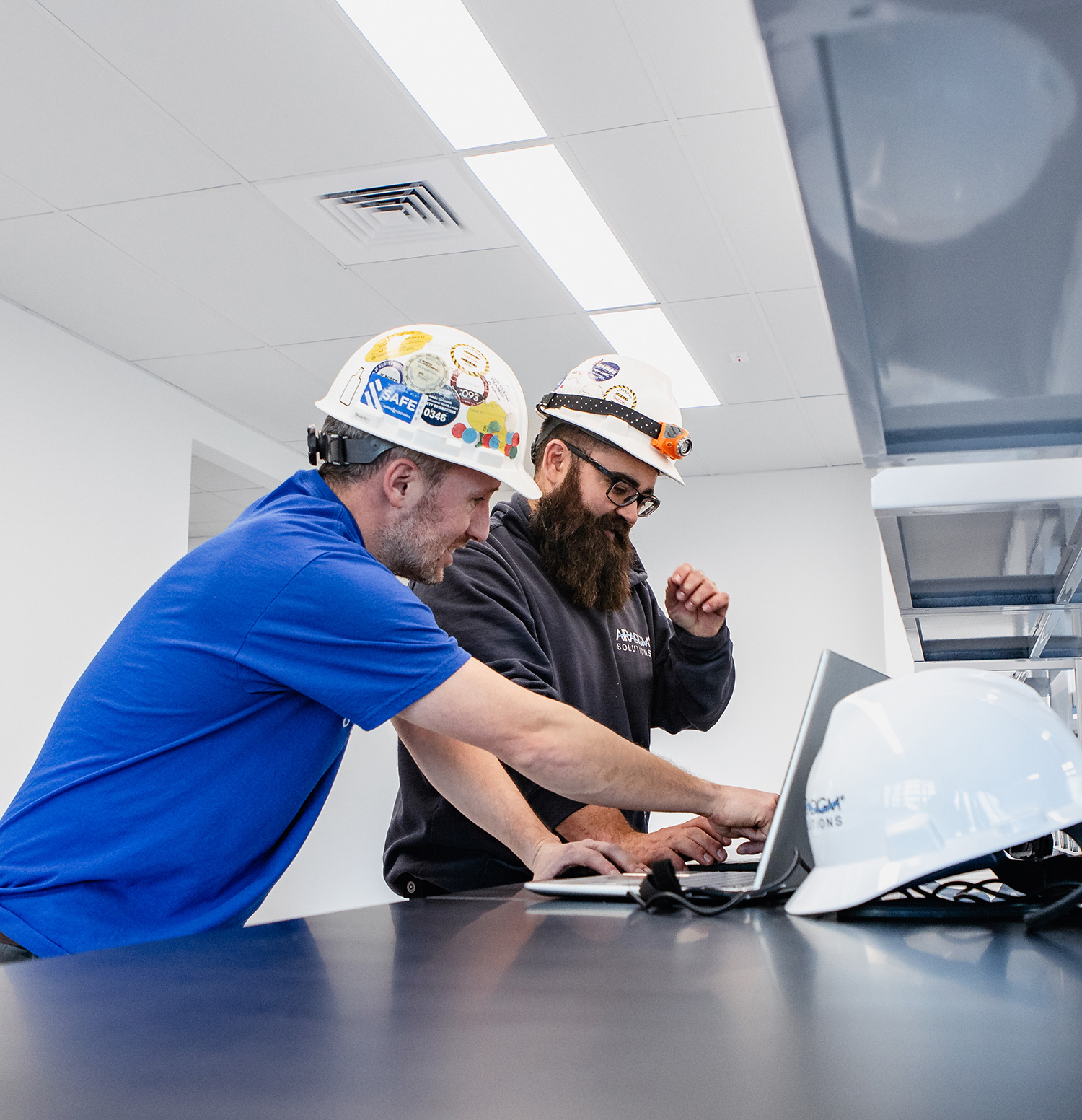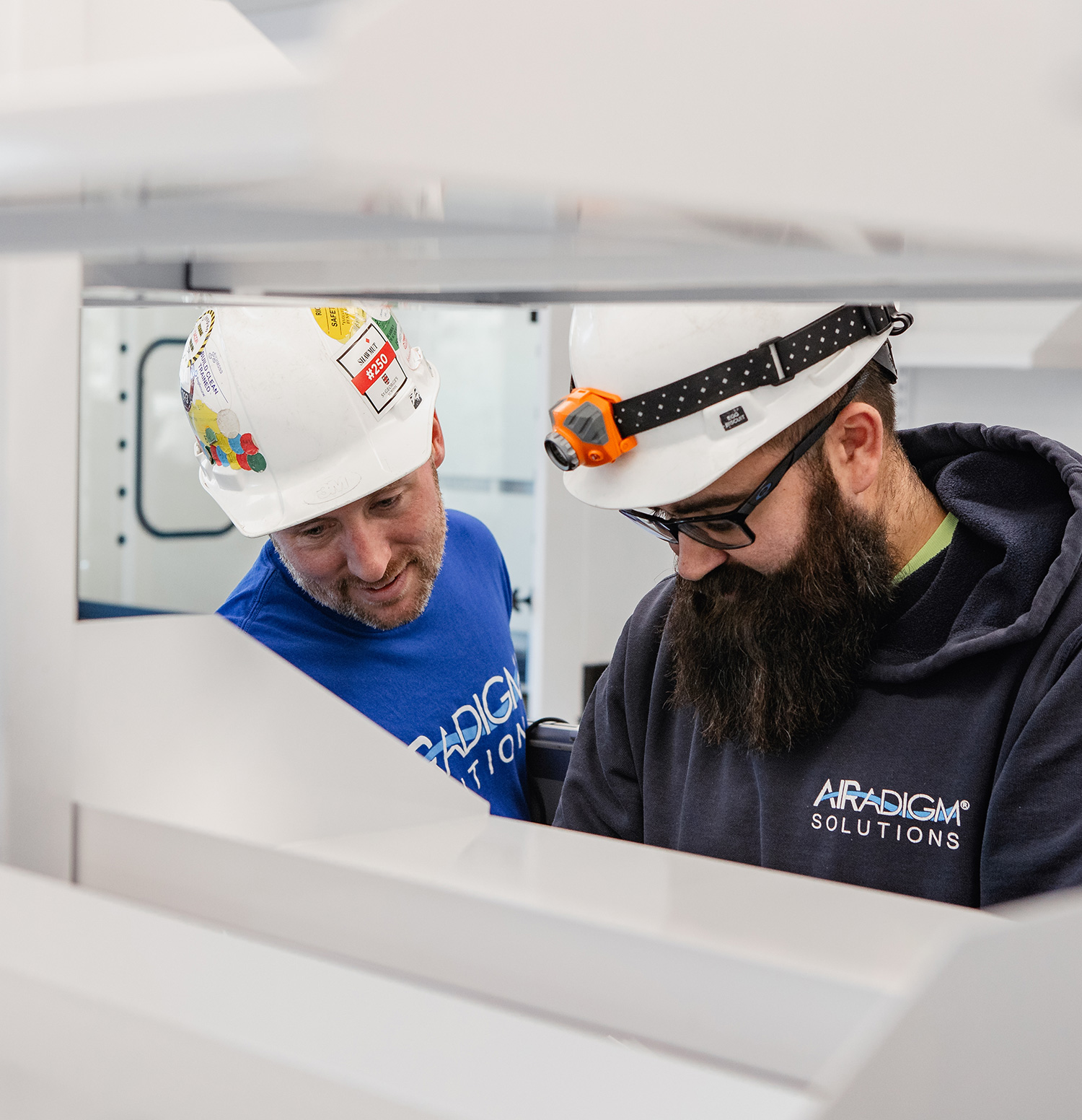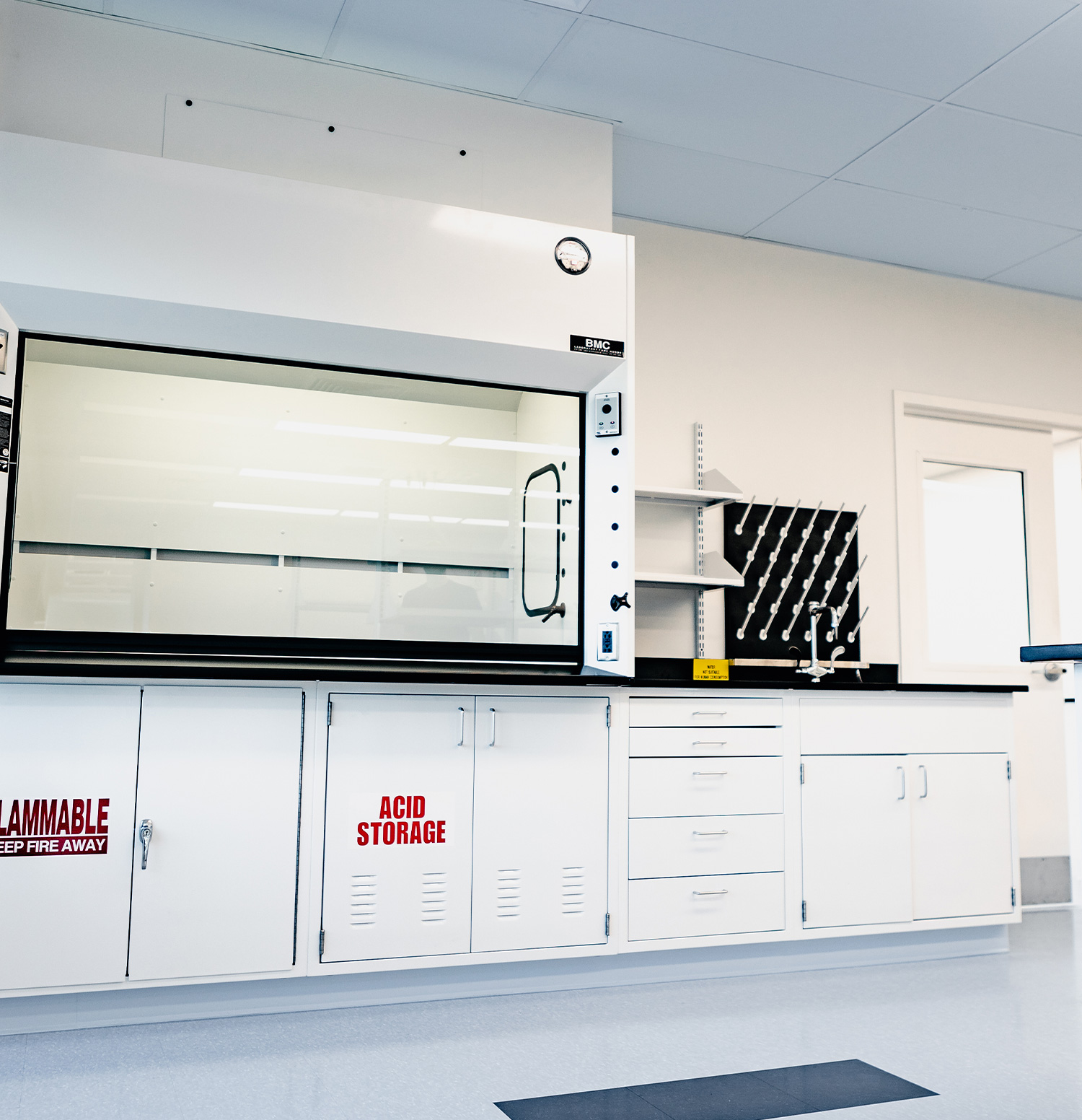Integrity-Based Testing
With our cleanroom and fume hood testing and certification, we provide an airtight seal of approval that your facility meets the highest cleanliness standards.
Testing your lab’s fume hoods every year is a fundamental safety practice — and we know just how to make sure they’re up to snuff. Our comprehensive services include chemical fume hood testing and certification, tracer gas testing, and maintenance of biosafety cabinets, all completed in accordance with standards set by AIHA/ANSI, SEFA, and ASHRAE. Our skilled technicians run through a rigorous series of tests — ensuring proper inflow and HEPA filter integrity, observing smoke patterns, and documenting any leaks and defects.
Alongside fume hood testing, our services also include cleanroom testing and certification. After your space is fully balanced, our professionals take the job to a more granular level. This means ensuring that HEPA filters efficiently trap contaminants, confirming proper HVAC function, and making sure the cleanroom meets the proper ISO standard. Our commitment to accuracy and responsiveness is reflected in our thorough and detailed reporting — delivered to you within 24 hours so you can make informed, fast, and cost-saving decisions.


